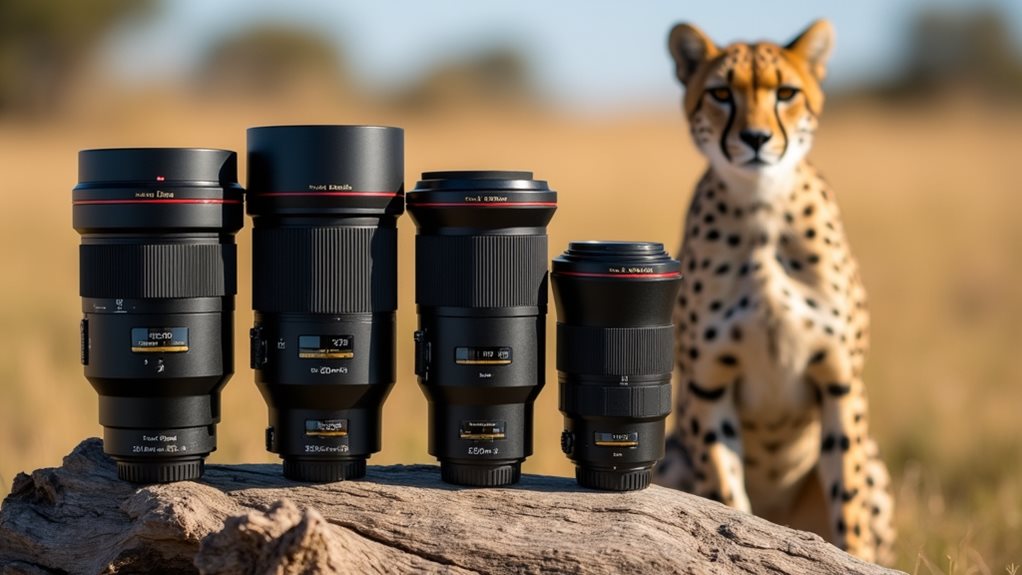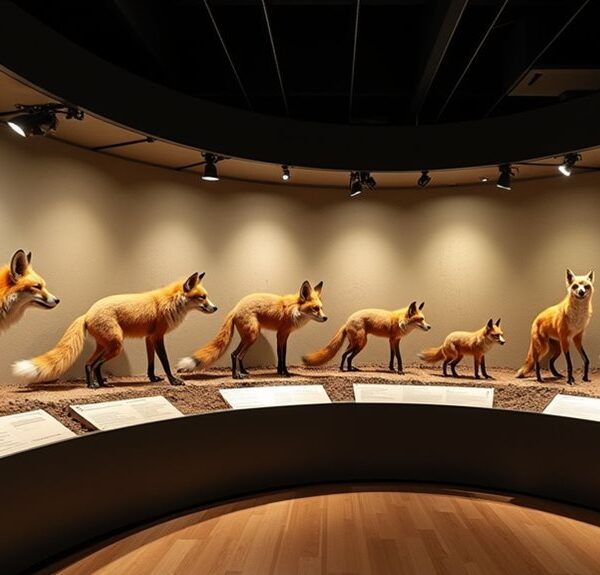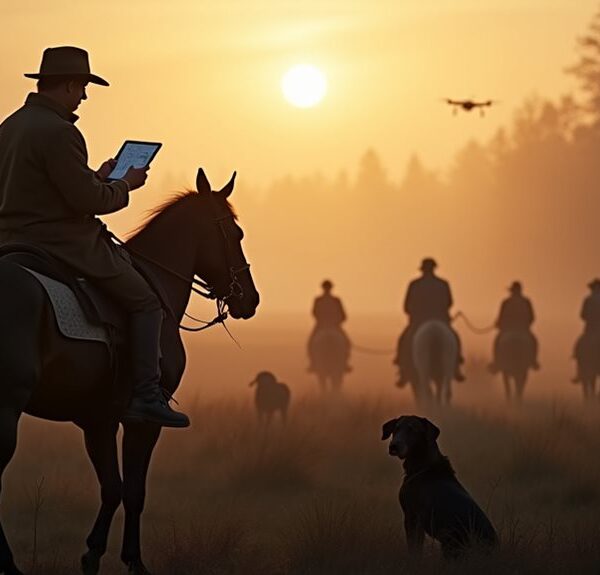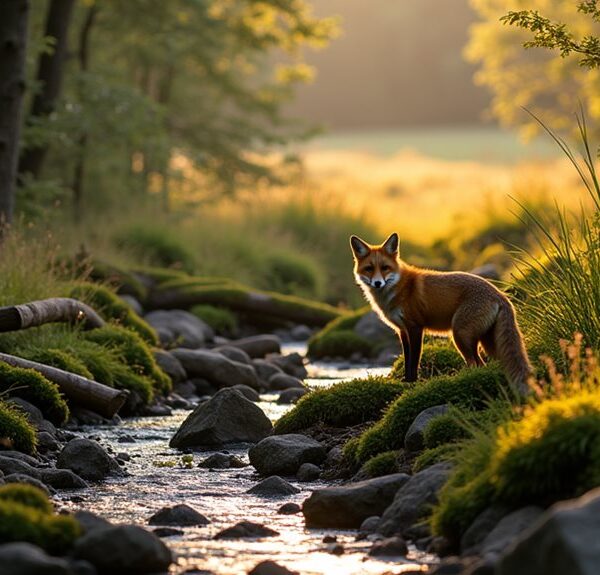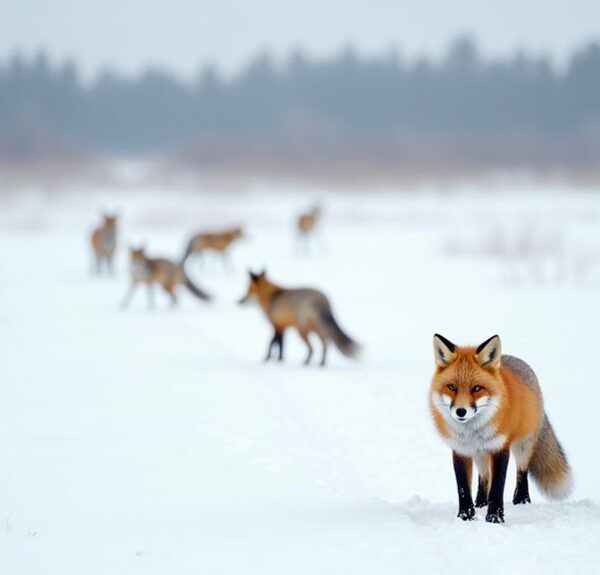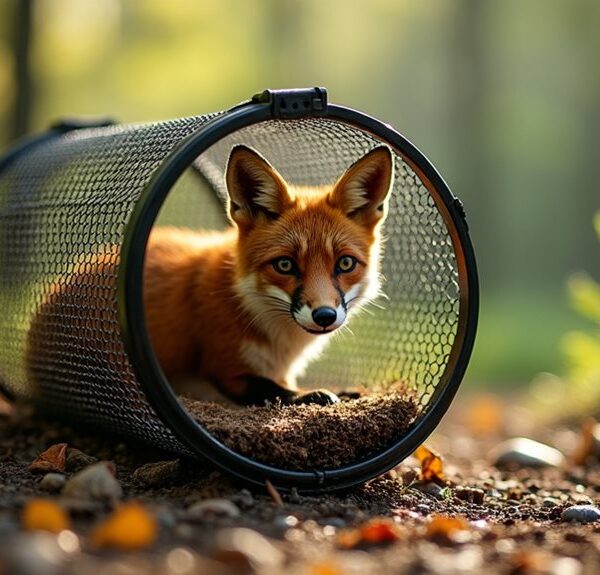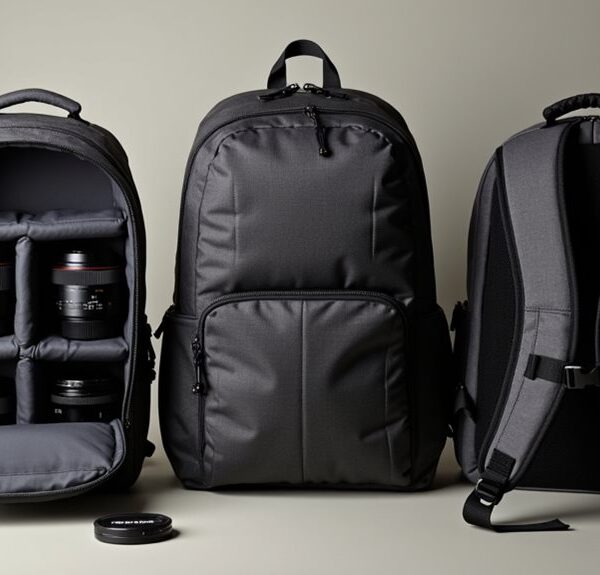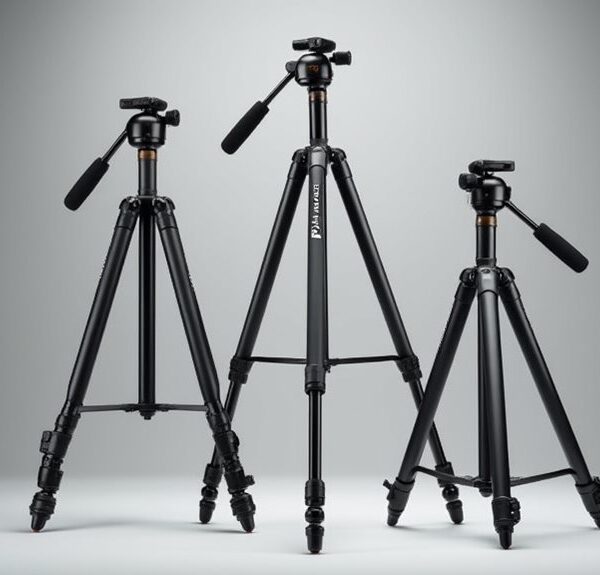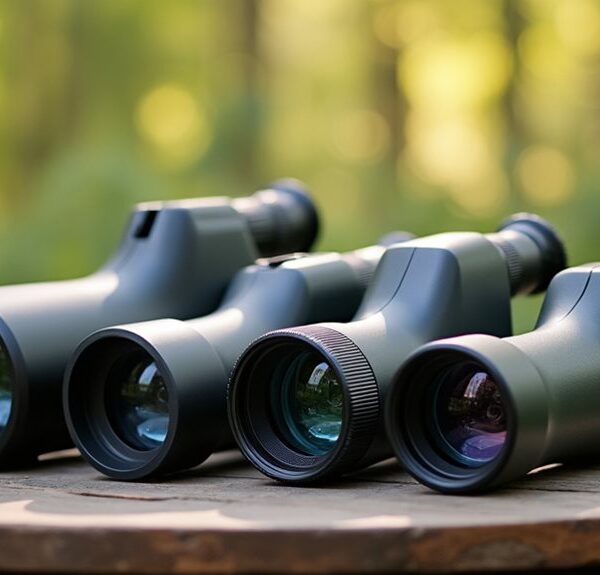When capturing wildlife or sports action, you’ll need a quality telephoto lens to bring distant subjects closer. Top 2025 options include the EF/EF-S 420-800mm for budget shooters, the impressive 420-1600mm with 2X teleconverter for extreme reach, and Canon’s reliable 75-300mm f/4-5.6 III for beginners. Phone photographers should consider Neewer’s 65mm HD lens. Each option balances focal range, aperture, and portability differently, so your perfect match awaits below.
Contents
- 1 EF/EF-S 420-800mm F8.3 Telephoto Zoom Lens for Canon EOS Cameras
- 2 High-Power 420-1600mm Telephoto Zoom Lens for Canon Cameras
- 3 NEEWER HD 65mm Telephoto Phone Camera Lens (1.7X Zoom)
- 4 Canon EF 75-300mm f/4-5.6 III Telephoto Zoom Lens for Canon SLR Cameras
- 5 Canon EF 75-300mm f/4-5.6 III Telephoto Zoom Lens for Canon SLR Cameras
- 6 Factors to Consider When Choosing Telephoto Lenses
- 7 Final Thoughts
EF/EF-S 420-800mm F8.3 Telephoto Zoom Lens for Canon EOS Cameras
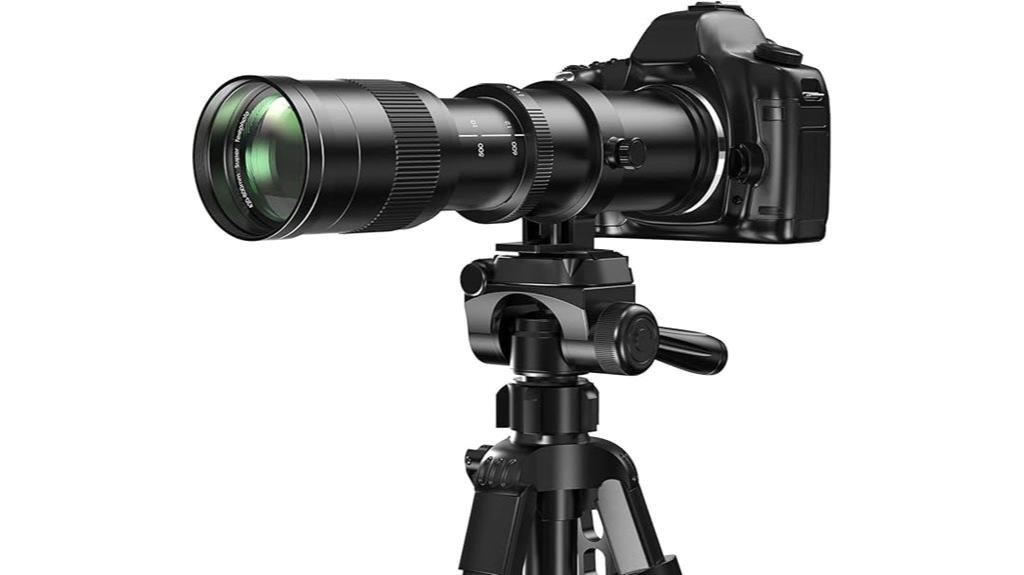
Photographers who crave distance without breaking the bank will find their perfect match in the EF/EF-S 420-800mm F8.3 Telephoto Zoom Lens. This fully manual focus powerhouse brings distant subjects right to your viewfinder, whether you’re tracking eagles or capturing the moon’s craters.
You’ll need to adopt the manual experience—adjusting focus, shutter speed, and ISO yourself—but that’s part of the charm! The lens works with most Canon DSLR models, including the popular Rebel series and professional 5D lineup. Its internal focusing mechanism and UMC technology guarantee your wildlife shots stay crisp and clear, even when you’re zoomed to the impressive 800mm range.
Best For: Amateur wildlife photographers, moon photography enthusiasts, and budget-conscious Canon shooters seeking extreme telephoto reach without investing in expensive prime lenses.
Pros:
- Impressive 420-800mm zoom range delivers extraordinary reach for distant subjects like wildlife and celestial objects
- Affordable entry into super-telephoto photography compared to Canon’s premium L-series lenses
- Compatible with a wide range of Canon DSLR models, from entry-level Rebel series to professional 5D and 1D bodies
Cons:
- Fully manual focus operation requires practice and patience to master, especially at longer focal lengths
- Fixed f/8.3-16 aperture limits low-light performance and requires higher ISO or slower shutter speeds
- No electronic contacts means no EXIF data recording and the camera will display F00/F– for aperture settings
High-Power 420-1600mm Telephoto Zoom Lens for Canon Cameras
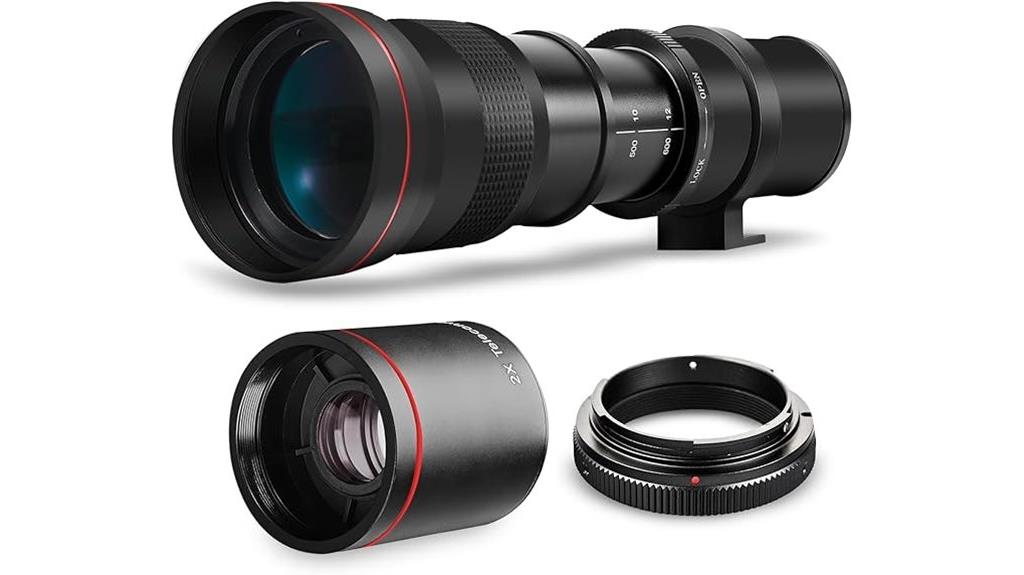
Wildlife and sports enthusiasts who’ve struggled to capture distant subjects will find their perfect match in the High-Power 420-1600mm f/8.3 Telephoto Zoom Lens for Canon cameras. This impressive lens transforms your photography, bringing faraway action right to your fingertips.
With its 2X Teleconverter, you’ll double your reach to an astounding 1600mm—perfect for capturing that eagle soaring overhead or a soccer player’s winning goal. Compatible with numerous Canon models from the Rebel series to professional EOS bodies, you won’t need to worry about fit. At just 1.7 pounds, it’s surprisingly portable for its power. You’ll appreciate the crisp detail and clarity this lens delivers, making those distant shots finally possible.
Best For: Wildlife photographers, sports enthusiasts, and nature observers who need extreme telephoto reach without investing in heavier, more expensive professional lenses.
Pros:
- Exceptional 420-1600mm zoom range with included 2X Teleconverter provides remarkable reach for capturing distant subjects
- Compatible with a wide variety of Canon DSLR models from entry-level Rebel series to professional EOS bodies
- Lightweight design at only 1.7 pounds makes it surprisingly portable for a super-telephoto lens
Cons:
- Fixed f/8.3 aperture is relatively slow, limiting performance in low-light conditions
- Manual focus only, requiring more skill and patience than autofocus lenses
- Image quality, while good for the price, doesn’t match the sharpness of Canon’s premium L-series telephoto lenses
NEEWER HD 65mm Telephoto Phone Camera Lens (1.7X Zoom)
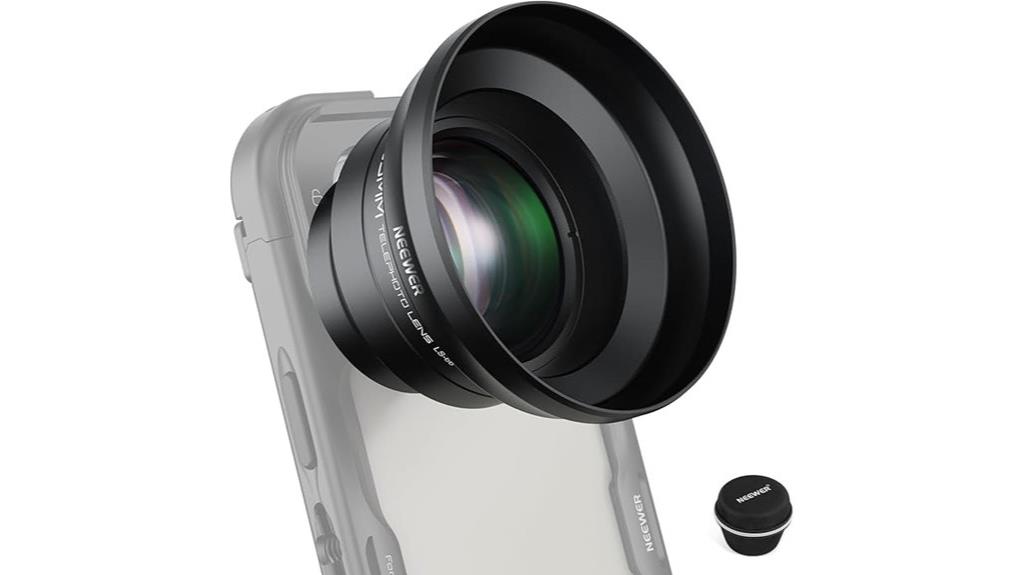
Smartphone photography enthusiasts looking to capture distant subjects will find the NEEWER HD 65mm Telephoto Lens a game-changer for their mobile setup. With 1.7x magnification, you’ll bring wildlife, sports action, and concert performances noticeably closer without sacrificing image quality.
The lens’s premium construction features multicoated HD glass (7 elements in 5 groups) that delivers remarkable sharpness. Its durable aluminum alloy body stands up to outdoor adventures while remaining lightweight. You’ll need a compatible 17mm thread mounting system—perfect for NEEWER’s backplates and cages for recent iPhones and Samsung models. Just remember, you’ll need to purchase mounting accessories separately to access this portable telephoto’s full potential.
Best For: Mobile photography enthusiasts who want to capture distant subjects with better detail and clarity using their iPhone or Android devices.
Pros:
- High-quality optics with 7 elements in 5 groups deliver sharp, detailed images with 1.7x magnification
- Durable aluminum alloy construction resists scratches and impacts, making it suitable for outdoor adventures
- Compatible with a range of premium NEEWER accessories for newer iPhone and Samsung flagship models
Cons:
- Requires separate purchase of compatible lens backplates, cages, or cases as mounting accessories
- Only works with 17mm lens threads, limiting compatibility with some phone models
- Relatively heavy at 10.5 ounces, which may affect handling comfort during extended use
Canon EF 75-300mm f/4-5.6 III Telephoto Zoom Lens for Canon SLR Cameras
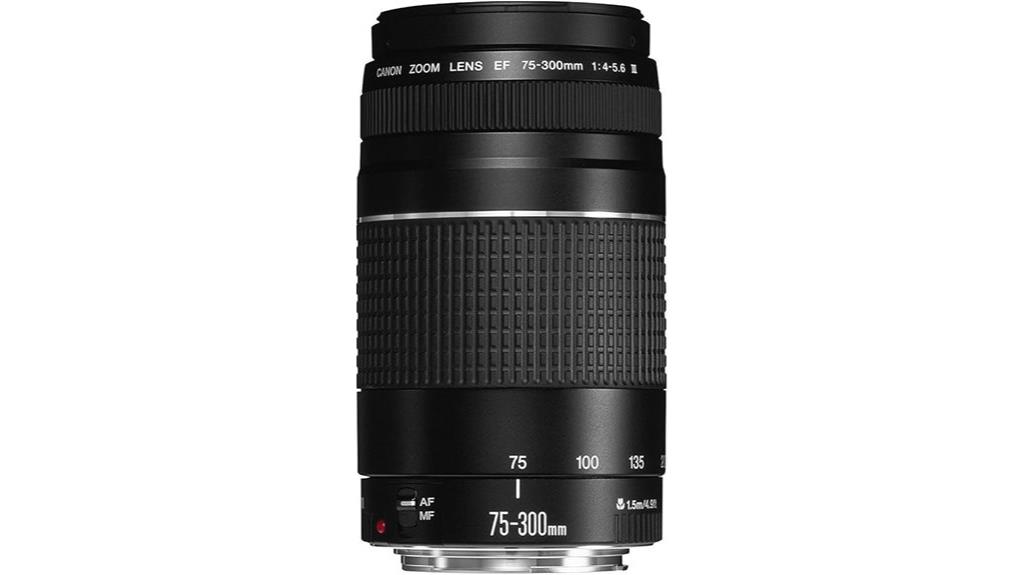
The Canon EF 75-300mm f/4-5.6 III stands as an affordable entry point into the world of telephoto photography, perfect for budget-conscious enthusiasts looking to capture distant wildlife or fast-moving sports action. With its impressive zoom range and lightweight design (just 1.06 pounds!), you’ll enjoy versatility without shoulder strain during long shooting sessions.
While it lacks image stabilization, the lens delivers solid performance with its 13-element construction and respectable 4.9-foot minimum focusing distance. You’ll appreciate the seamless zoom mechanism, identified by its distinctive silver ring. At under $200, it’s no wonder this lens ranks #30 in SLR Camera Lenses with a stellar 4.7-star rating from over 5,600 customers!
Best For: Budget-conscious photographers looking to explore telephoto photography for wildlife, sports, and portrait shooting without investing in premium glass.
Pros:
- Impressive 75-300mm zoom range in a lightweight (1.06 pounds) package makes it highly portable for extended shooting sessions
- Affordable entry point into telephoto photography with solid construction (13 elements in 9 groups) and close focusing capability (4.9 feet)
- Strong customer satisfaction evidenced by 4.7-star rating from over 5,600 users and #30 ranking in SLR Camera Lenses
Cons:
- Lacks Image Stabilization, potentially resulting in blurry images at longer focal lengths without a tripod
- Uses a basic DC motor for autofocus rather than Canon’s premium USM (Ultrasonic Motor) technology
- Maximum aperture of f/4-5.6 is relatively slow, limiting performance in low-light conditions and restricting background blur capability
Canon EF 75-300mm f/4-5.6 III Telephoto Zoom Lens for Canon SLR Cameras
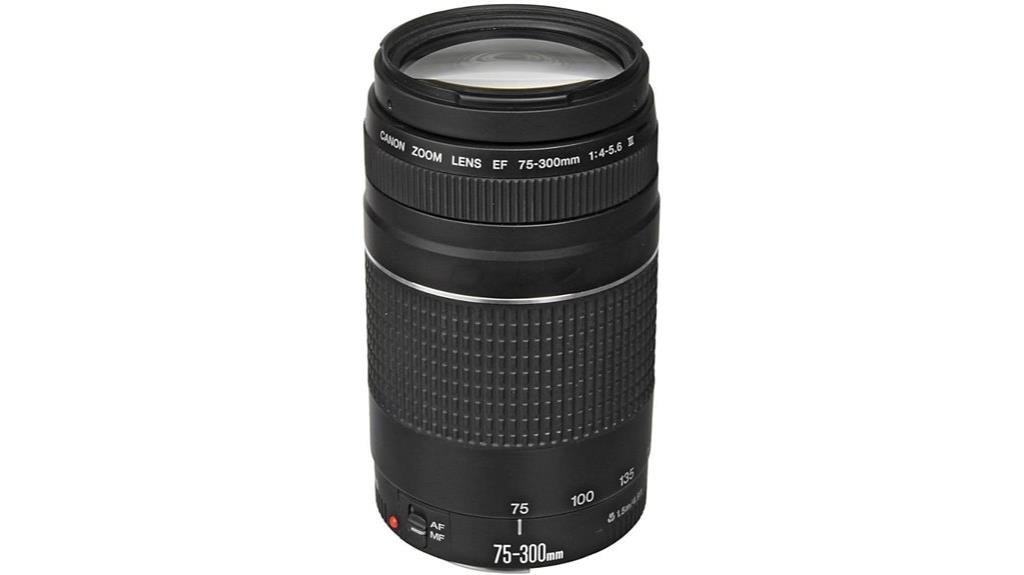
Passionate photographers seeking maximum reach without breaking their backs will appreciate Canon’s lightweight marvel. At just 1.05 pounds, it’s the lightest in its class, making those long wildlife shoots much more comfortable for your shoulders.
You’ll enjoy versatile focal lengths from 75-300mm, perfect for capturing distant subjects with impressive detail. The improved zooming mechanism, marked by its distinctive silver ring, offers fluid shifts as you frame your shot. With a minimum focusing distance of 4.9 feet and quick, quiet autofocus, you won’t miss those fleeting moments of action. Plus, its compact dimensions (2.8 inches diameter, 4.8 inches long) mean it won’t dominate your camera bag.
Best For: Photographers seeking an affordable, lightweight telephoto zoom lens for wildlife, sports, or distant subject photography without adding significant weight to their gear.
Pros:
- Extremely lightweight (1.05 pounds) and compact (4.8 inches long), making it ideal for extended shooting sessions
- Impressive 75-300mm zoom range provides excellent versatility for capturing distant subjects
- Quick and quiet autofocus with micro USM helps capture fleeting moments and moving subjects
Cons:
- No image stabilization, which may lead to blurry images when shooting handheld, especially at longer focal lengths
- Maximum aperture of f/5.6 at the telephoto end limits low-light performance
- Minimum focus distance of 4.9 feet is relatively long compared to more premium telephoto lenses
Factors to Consider When Choosing Telephoto Lenses
Selecting the right telephoto lens for your wildlife and sports photography isn’t just about the biggest zoom—you’ll need to evaluate several key factors that affect your shooting experience. You’ll want to assess the focal range for proper subject framing, aperture values for light gathering ability, and practical concerns like weight and mount compatibility. Whether you prefer manual focus for creative control or rely on lightning-fast autofocus for action shots, your choice will directly impact how successfully you capture those split-second moments in nature and sports.
Focal Range Benefits
Wildlife and sports photographers understand that focal range serves as the backbone of successful telephoto photography. When you’re trying to capture that elusive eagle or a game-winning goal, your lens’s focal length determines how close you can get without disturbing the action.
Lenses with impressive reach, like 800mm or 1600mm options, let you photograph subjects that would otherwise remain tiny specks in your frame. You’ll appreciate this when shooting the moon or distant mountain vistas! The versatility of zoom lenses, such as 75-300mm or 420-800mm models, means you won’t miss shots while fumbling to change lenses.
Remember to reflect on maximum aperture alongside focal length—it’s like choosing between binoculars and a telescope, affecting both light capture and depth of field in your stunning action shots.
Aperture Value Impact
Beyond focal length, the aperture value of your telephoto lens plays a starring role in capturing those perfect wildlife and sports moments. When you’re tracking a cheetah at dusk or shooting under stadium lights, a lower f-stop (like f/2.8) will be your best friend, allowing more light to reach your sensor.
You’ll notice many telephoto options have variable apertures—f/4-5.6 means you’ll get less light as you zoom in. This matters! A wider aperture not just brightens your image but creates that dreamy background blur that makes your subject pop. Plus, your autofocus will thank you when it’s working faster and more accurately in challenging light.
Don’t overlook this critical spec when lens shopping—it might mean the difference between capturing that split-second touchdown or missing the moment entirely.
Weight and Portability
When you’re trekking through muddy wetlands at dawn or standing for hours on the sidelines, the weight of your telephoto lens becomes as crucial as its optical quality. You’ll quickly appreciate those lighter 1.7-pound models during all-day shoots when every ounce matters.
Remember, most serious telephoto lenses (420-800mm) tip the scales at over 1.5 pounds, often necessitating a tripod for stability. If you’re seeking more flexibility, consider compact 75-300mm options weighing as little as 16.8 ounces – perfect for spontaneous shooting without the shoulder ache!
Don’t forget to factor in your camera body’s weight too. The entire package will determine how nimble you’ll be when that rare bird appears or when you’re chasing action across a field. Your back will thank you for choosing wisely!
Mount Compatibility
The three most essential words in telephoto lens shopping might just be “check your mount.” Nothing deflates excitement faster than discovering your dream 600mm lens won’t actually attach to your camera!
Camera brands use specific mount systems—Canon’s EF/EF-S, Nikon’s F-mount, Sony’s E-mount—and these aren’t interchangeable without adapters (which often compromise performance). Before falling in love with that gorgeous telephoto, confirm it’ll actually fit your gear.
Some manufacturers now offer multi-mount compatibility, giving you flexibility if you switch camera systems later. But don’t assume—always verify compatibility with your exact model. The wrong mount doesn’t just mean disappointment; it could damage your expensive equipment and disable critical features like autofocus and aperture control. Trust us, that extra minute of research saves heartache!
Manual Vs Autofocus
Now that you’ve sorted out which lenses will physically connect to your camera, let’s talk about how you’ll actually focus them. When shooting wildlife or sports, your focusing system can make or break the shot!
Autofocus lenses are typically your best bet for fast-moving action. They’ll track that soaring eagle or sprinting athlete with precision while automatically adjusting settings. You’ll capture more usable shots, especially if you’re new to telephoto photography.
However, don’t dismiss manual focus entirely. In tricky lighting conditions where autofocus might hunt or struggle, manual focusing gives you complete control. Plus, there’s something incredibly satisfying about nailing focus yourself! Many pros actually switch to manual when autofocus starts to falter.
Consider your shooting style and subjects carefully—the perfect choice depends on your specific needs and skill level.
Image Stabilization Features
Shake-free shooting becomes your secret weapon with image stabilization in telephoto lenses. When you’re tracking a soaring eagle or a sprinting athlete, even the slightest tremor in your hands can turn a masterpiece into a blurry disappointment, especially at those impressive focal lengths.
Without IS, you’ll need faster shutter speeds, which isn’t always possible when the light starts fading. Optical stabilization works its magic by shifting elements inside your lens to counteract those tiny movements, letting you shoot up to four stops slower than normally possible. That’s the difference between capturing the moment or missing it entirely!
Many modern telephoto options combine optical, digital, and in-body stabilization for rock-solid results. You’ll appreciate this triple threat when you’re shooting handheld at sunset or from a distance.
Budget Vs Performance
When weighing your options for telephoto lenses, striking the right balance between budget and performance feels like a delicate dance. You’ll often find that higher price tags accompany those drool-worthy specs like wider apertures and longer focal lengths—but is the splurge always necessary?
Budget options typically compromise on image stabilization and autofocus speed, which might leave you frustrated when tracking that eagle soaring overhead. However, don’t dismiss more affordable lenses entirely! Many photographers capture stunning images without breaking the bank.
Consider what you’ll actually use the lens for before investing. If you’re shooting professional sports events, that premium glass might be worth every penny. But for weekend wildlife walks, a mid-range option could perfectly suit your needs. Remember, the best lens isn’t always the most expensive—it’s the one that helps you capture the moments that matter.
Final Thoughts
You’ve now seen the best telephoto lenses of 2025 for wildlife and sports photography. Whether you’re tracking a cheetah across the savanna or capturing your kid’s winning goal, the right lens makes all the difference. Consider your budget, shooting style, and specific needs before making your choice. With these top options, you’ll be ready to zoom in on life’s most exciting moments with stunning clarity!

